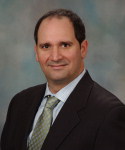28 May Mayo Researchers Develop Mouse Model To Study ALS and Frontotemporal Dementia
 MedicalResearch.com Interview with:
MedicalResearch.com Interview with:
Dr. Leonard Petrucelli Ph.D
Mayo Clinic
Jacksonville, FL 32224
MedicalResearch: What is the background for this study?
Dr. Petrucelli: According to the ALS Association, more than 30,000 Americans live with amyotrophic lateral sclerosis (ALS), a condition that destroys motor neuron cells that control essential muscle activity such as speaking, walking, breathing and swallowing. After Alzheimer’s disease, frontotemporal dementia (FTD) is the most common form of early onset dementia. It is characterized by changes in personality, behavior, and language due to loss of neurons in the brain’s frontal lobe. Once considered rare, frontotemporal dementia is now thought to account for up to 10 to 15 percent of all dementia cases, according to the Alzheimer’s Association.
In 2011, Mayo investigator Rosa Rademakers, Ph.D., identified the most common genetic mutation known to cause ALS and FTD, namely a repeat expansion in the gene C9ORF72. The C9ORF72 repeat expansion leads to the generation of toxic RNA species that form abnormal foci, as well as inclusions of c9RAN proteins in affected cells in the central nervous system. Prior to this research study lead by Leonard Petrucelli, Chair of the Department of Neuroscience at the Mayo Clinic Florida, no animal model existed that fully recapitulated the known clinicopathological features of what is now collectively referred to as c9FTD/ALS. Without such an animal it has remained difficult to identify important mechanisms by which the repeat expansion leads to neurodegeneration and putative therapeutic targets that may mitigate disease in patients where currently there are no curative treatments.
MedicalResearch: What are the main findings?
Dr. Petrucelli: Ms. Jeannie Chew, a Mayo Graduate School student and member of Dr. Petrucelli’s team, developed a mouse model that exhibits the neuropathological and behavioral features associated with c9FTD/ALS by introducing the expanded C9ORF72 sequence in the mouse brain and spinal cord. At six months of age, using the new mouse model, it was demonstrated that the C9ORF72 repeat expansion leads to the generation and aggregation of the toxic RNA foci and c9RAN inclusions in the mouse brain. There were also signs of brain atrophy in the C9orf72 mice such as the loss of neurons, including motor neurons, as well as decreased body and brain weight. Unexpectedly, the new study also provided a link between the C9ORF72 repeat expansion and inclusions of the protein TDP-43, another hallmark feature of ALS and FTD asTDP-43 has long been known to become deregulated in the majority of cases. The C9ORF72 repeat expansion mice also exhibited hyperactivity, anxiety, antisocial behavior and motor deficits. The data therefore indicated that the observed biochemical and pathological changes may be responsible for the observed behavioral deficits and motor impairments akin to those seen in human disease.
MedicalResearch: What should clinicians and patients take away from your report?
Dr. Petrucelli: An important take away of our study is that we now have an in vivo model to work with to advance our understanding of what causes neurodegeneration in c9FTD/ALS. Using this model we can also find new biomarkers that may be important to patient diagnosis and prognosis, as well as identify and develop new therapeutic drugs. Furthermore, the exciting link found here between the C9ORF72 repeat expansion and TDP-43 pathology, indicating that the genetic mutation is upstream, or causative, of the hallmark deregulation of TDP-43, indicate that potential therapeutic approaches to mitigate repeat expansion associated pathologies, would also treat the underlying TDP-43 pathology. Moreover, the new model provides an opportunity to study how TDP-43 becomes deregulated, and that would have important ramifications for an even greater number of patients suffering from ALS and FTD, beyond those with the C9ORF72 genetic abnormality.
Citation:
C9ORF72 Repeat Expansions in Mice Cause TDP-43 Pathology, Neuronal Loss and Behavioral Deficits
Science aaa9344Published online 14 May 2015 [DOI:10.1126/science.aaa9344]
[wysija_form id=”3″]
MedicalResearch.com Interview with:, & Dr. Leonard Petrucelli Ph.D (2015). Mayo Researchers Develop Mouse Model To Study ALS and Frontotemporal Dementia MedicalResearch.com
Last Updated on May 28, 2015 by Marie Benz MD FAAD
